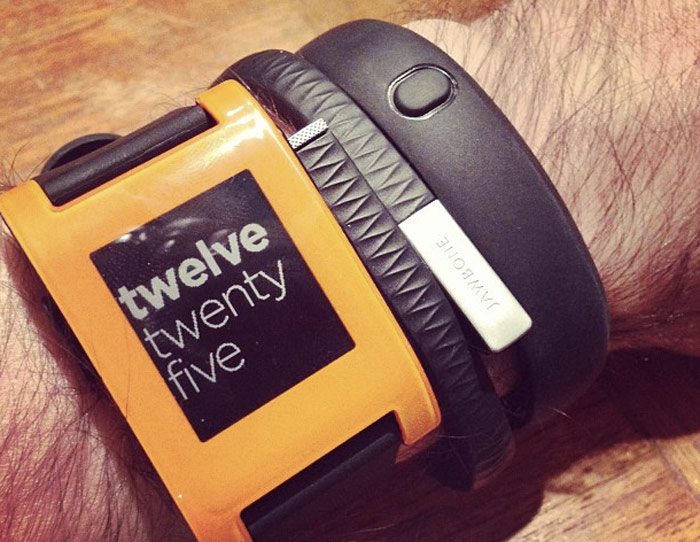Sales of wearable technology jumped almost 300 percent in 2012 as we bought 8.3 million fitness trackers, smart watches, and smart glasses. But we’re still at the very, very early stages of the industry, according to a new report that says that sales will balloon to 64 million devices within four years.
That’s better than 50 percent growth, every single year.
Today, the market is mostly fitness bands and trackers, like FitBit, Fuelband, and Jawbone Up. But within five years, it will shift to largely smart watches, according to Berg Insight. And, perhaps, smart glasses like Google Glass.
“A perfect storm of innovation within low power wireless connectivity, sensor technology, big data, cloud services, voice user interfaces and mobile computing power is coming together and paves the way for connected wearable technology,” Johan Svanberg, a Berg senior analyst, said in a statement. “However, today’s devices need to evolve into something more than single purpose fitness trackers or external smartphone notification centers in order to be truly successful.”
In other words, just like computers and tablets and smartphones, wearable technology is following the curve from single-purpose to multipurpose.
That’s clearly the case in terms of Google Glass, which will be released in 2014 and has applications for constant connectivity, directions, social notifications, augmented reality information streams, and games as well as potential fitness uses. And the same is true of Galaxy Gear, the smartwatch from Samsung that combines fitness with social alerts and a camera.
There certainly does seem to be market demand.
The Pebble smartwatch raised $10 million on Kickstarter and then another $15 million from investors. Analysts have estimated Glass could sell 650,000 units by 2017, and one study said that one in five Americans wanted an Apple iWatch — sight unseen. And one Google Glass competitor has already shipped 50,000 units of its first heads-up display product, while another, in Italy, is building a wearable glasses-based product that doesn’t make you look like a cyborg.
But one thing is clear: This is just the beginning.
“Google, Sony and Samsung have already launched products and other major players such as Apple and LG are expected to soon enter the market,” Berg Insight says.



